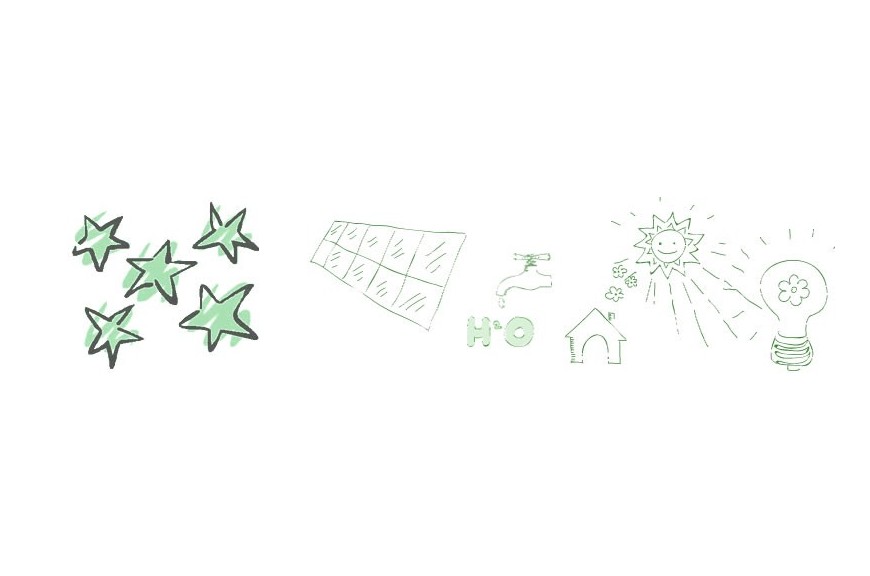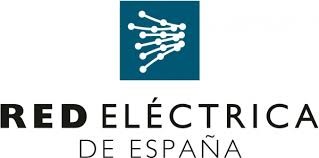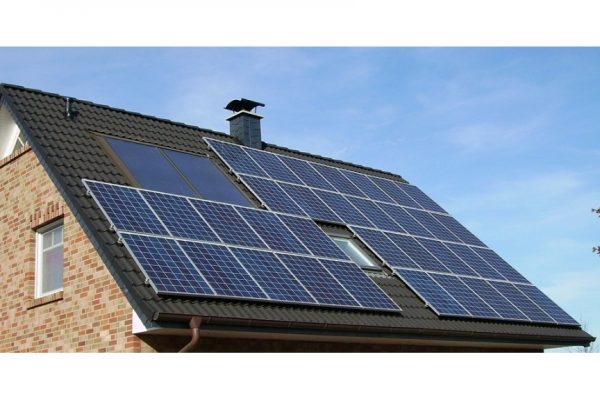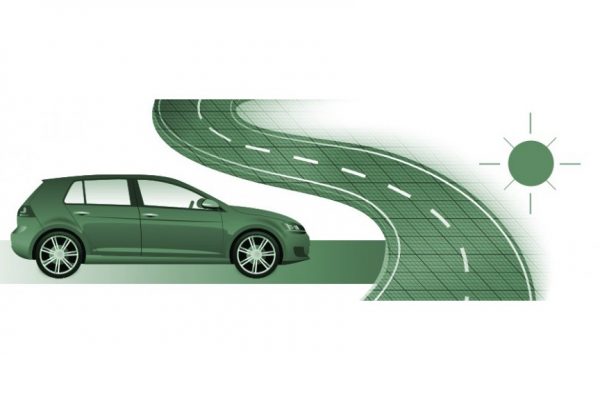Alternative Renewable Energy cost-effective and efficient
There are many ways to use renewable energies but what are the most profitable for an individual or small business?
Below we explain the 5 ways to use more renewable energy economically advantageous. There are many others which sometimes can have a high payoff, but these 5 are the most easily be implemented in any location.
Swimming pool heating with solar panels made of polypropylene
It is one of the systems that use more profitable solar power also in outdoor pools is among the few systems that allow regulations (RITE), which requires that open space heating systems have to always be with energies renewable.
The system is based on collection panels, for solar heaters, made entirely of polypropylene, by circulating the liquid to be heated. It is a very cheap system because:
- On the inside of these thermal solar panels circulates pool water directly.
- The heating system is only a recirculating parallel to the treatment that heats water for the simple passage through the panels.
- The sensors can be supported directly on a roof can be mounted almost no structure.
- In some cases you can use the same pump used to recirculate the water treatment plant to the panels, so that only one controller in addition to the existing installation is needed.
- The performance of the panels is very high at typical water temperatures and decreases as this, so no need for additional dissipation systems.
- The solar panels’ price per area of these collectors is lower than any type of solar thermal panels, as it is only made of polypropylene, no glass or other more expensive materials.
For all the reasons stated, heating the pool water through polypropylene solar panels is one of the systems that use renewable energy more economically profitable, allowing for very little money to increase a few months the bathing season, taking the best investment held in the pool.
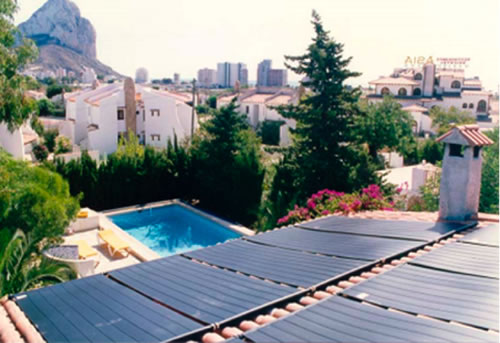
Hot water with solar energy
The use of solar heaters are widely used in homes of all types, as well as in hotels, gyms, residences and any other business that uses a certain amount of hot water. Besides, their use is mandatory since 2007 in new homes according to the technical building code (CTE).
A solar water heater can be of two types. For small installations usually, thermosyphon systems are installed, equipment. For two or three people in a house, it covers between 70% and 90% of the hot water needs of the year. The life of this equipment, especially those from leading brands such as Solahart ensures a speedy recovery in investment and great long-term savings. For slightly larger facilities the systems usually employed are forced circulation. The main difference between the two systems is that the former does not have the heat pump recirculating liquid, otherwise this amounts due to heating thereof. This makes the system more simple and with less maintenance but also somewhat less performance.
Heating water with solar energy is not only mandatory for new homes in the implementation of the CTE, but it is also profitable in any building in which hot water is used from a small home to a large hotel.
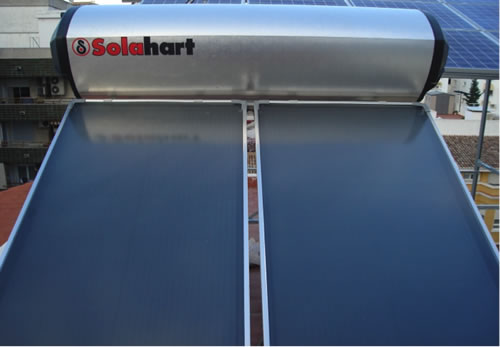
Biomass heating
For those unfamiliar biomass, biomass is merely a non-fossil fuel plant. The most used are: olive stone (clean and dry), shell crushed almond sliver (often used the pine) and pellet (made primarily of pressed sawdust). For each fuel a particular type of boiler is used.
The main economic attractiveness of using these instead of conventional fuels such as propane, butane, natural gas, oil, etc. is a lower cost of fuel.
And while there is another constraint that makes it attractive to use; a local economy of resource use is encouraged and, although his burning also produces CO2 (greenhouse effect), this CO2 is “effect 0” for a CO2 recently captured by the plants from which comes the biomass that will be captured in a cycle of a few years.
Biomass boilers have reduced their price in recent years and are no longer comparatively more expensive than conventional fuels, so the lowest cost fuel the extra cost of installation is recovered in a short time.
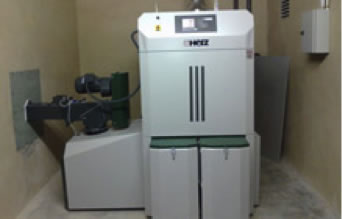
PV self-consumption
It consists of power generation using a solar kit connected directly to the electrical grid inside a house or building, this energy is self-consumed while generated by the solar photovoltaic kit.
The complete installation is very simple because the solar kit consists only of solar panels, inverter grid connection and small equipment (the subject of solar panels, wiring and protection).
The only caveat is that our consumption must always be higher than the generation that we get with the solar kit because otherwise we would be pouring energy into the conventional electricity grid; energy will not charge and without prior legalize we would not have the right to pour. Some investors incorporate a control not pour network, forcing the plant to produce maximum consumption at that moment. Thus the problem of waste is avoided, but clear is that the energy we are not self-consuming not produce a saving for us.
It is for this reason that in housing applications the chosen kit for self-consumption usually is small. To find out what size facility can make the best is to make a prior measure of consumption by meter as shown in our section dedicated to energy efficiency.
Consumption photovoltaic facilities are very profitable, more so the higher the price paid kWh consumed in our electricity bill and is especially recommended in places where there is known a steady intake.
PV assisted self-consumption
The photovoltaic consumption assisted or self-sufficiency born as the application of photovoltaic consumption in homes where we cover a large part of consumption, ie, we want to harness all the energy we are capable of generating although at the time it is not consuming as much on housing. This requires the installation of a battery storage system that allows us to temporarily detach the generation of our solar kit, the consumer can generate and consume day night is necessary.
If we had no conventional power grid storage system should be large enough to supply us in any situation; increased consumption of media for days, several consecutive cloudy days or rain; which would imply a very high cost of the storage system. And the solar panel kit should be somewhat oversized to allow the energy necessary to ensure even in some sunny days. But if the available network, you can minimize the storage system to the minimum energy required for the day is available for the night, and let the network covers possible contingencies. This way you get to cover up to 90% of the energy needed for an entire year, allowing considerable savings. Savings is greater considering that this system allows us to reduce the contracted power, saving on all terms of the electricity bill.

